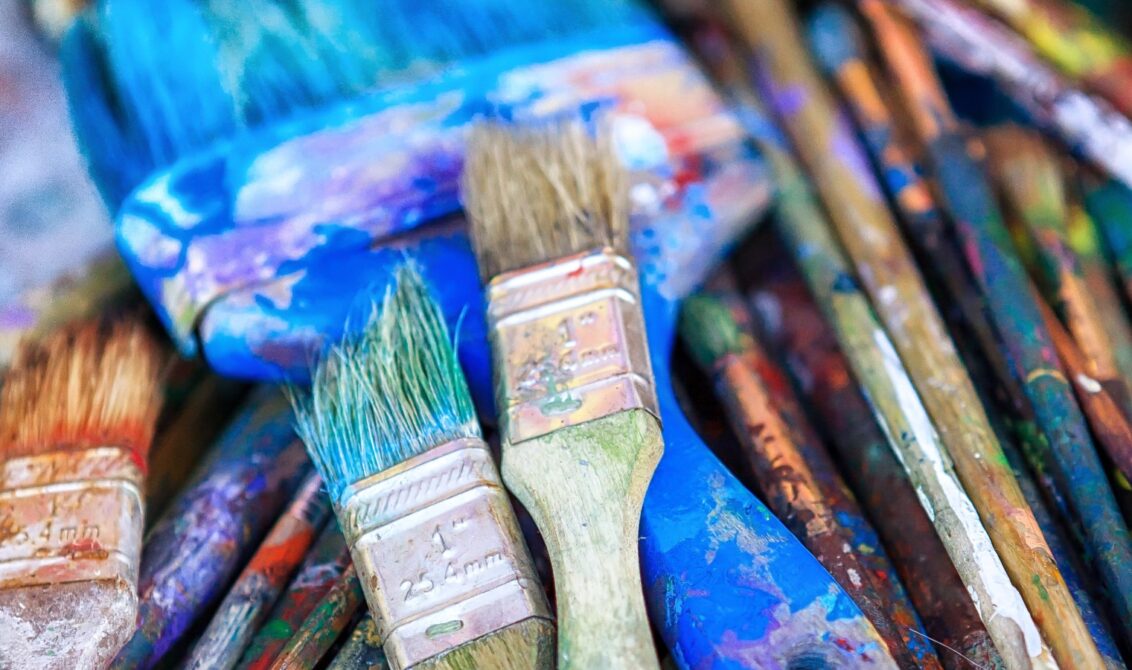
In this article, Anita Chamberlain, Visual Arts Coordinator at The British International School in Stavanger, Norway shares her experiences of running an art project with a group of children with learning difficulties and how, through the medium of art, children can express their ideas, opinions and feelings.
The background to the project
I have been a teacher educator since 1994, teaching across Primary schools in the UK where I taught Reception class to Year 6, taking part in a Teacher Exchange to Australia in 2000 and from 2004 to 2014, prior to moving to my current school in Norway, I was a Senior Lecturer and Primary Foundation subject coordinator at a UK university.
Here I reflect on an art project I completed with a group of children who had learning difficulties. Within my role as Senior Lecturer in Education it was my belief that I should still be involved in teaching with primary schools, sharing my knowledge with educators and develop links with community groups.
All the children who participated in the art project had a learning disability and were part of The Aiming High agenda (which is for inclusion of all children regardless of ability). The project was organised by Children’s Services Learning Difficulty and Disability team.
The impetus was to provide creative and engaging activities for young people throughout the half term vacation. The team brief was ‘to arrange activities where all children regardless of disability could express themselves and be creative’. I was asked to provide art activities for a small group of seven children who had a range of needs and disabilities. The learning disabilities consisted of Cormelia de Lange syndrome, Aspergers, physical disability (wheelchair bound) and Autism. My aim was to explore how art allowed children with a learning difficulty the freedom to explore.
Art is play
My belief is that art is play. Art is about playing, reflecting, adapting and modifying purposeful ideas. I agree with Kristen Eglinton (2003:5) who states ‘that art experiences do stimulate the senses’. Children are inventive people and for them art can be an expression of who they are and a way to process and integrate their perceptions about life and a condition of being human. It is a healthy vehicle of expression for everyone and can take many forms.
Art activities give all children especially children who are not able to communicate verbally the opportunity to freely express their inner most thoughts and develop personal ideas. All children should be engaged in playful investigation where they can ‘immerse themselves in the habits of artists’ (Key & Stillman, 2009:25)
Allowing children space and opportunity for expression
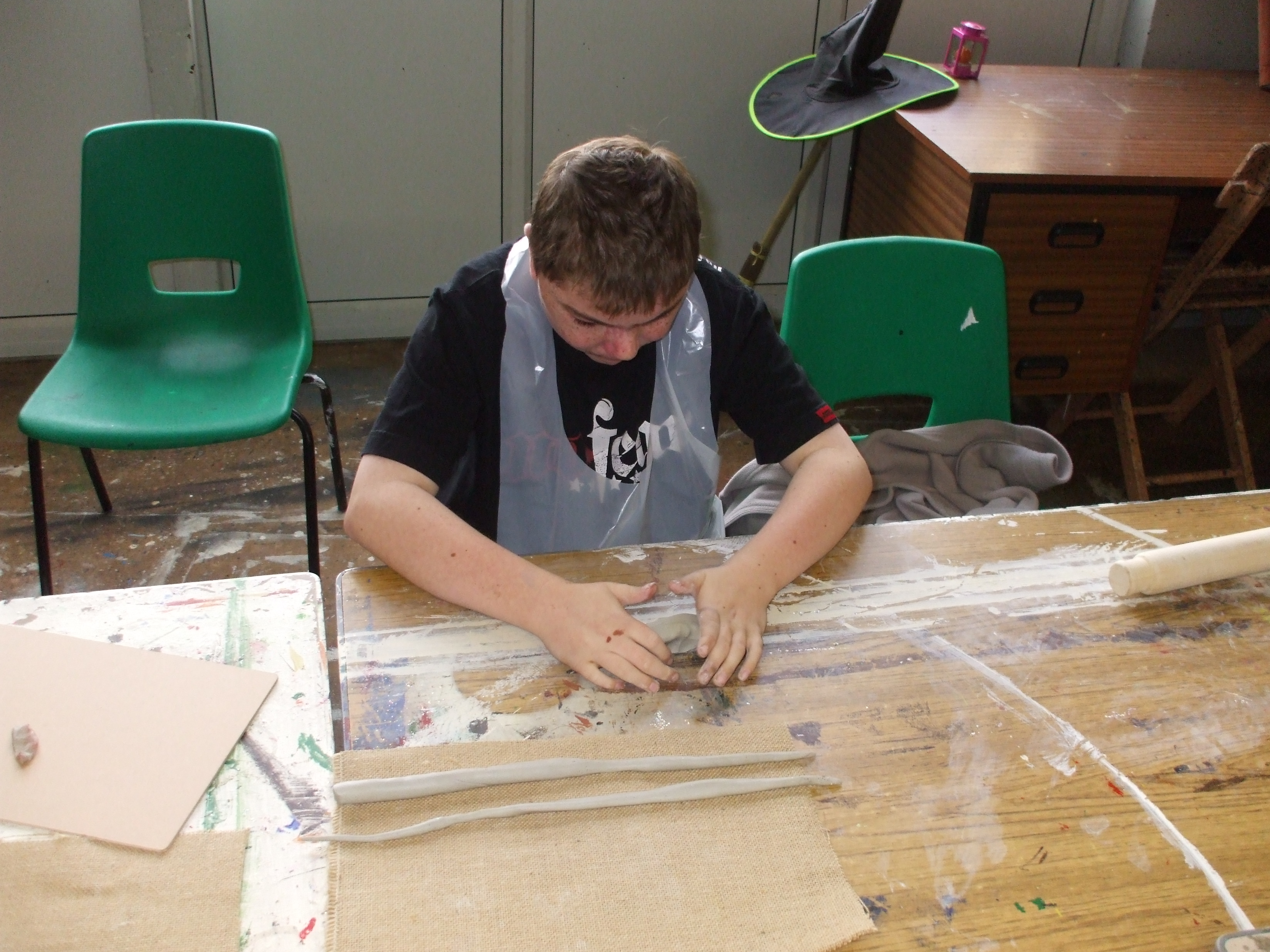 Integrating art into the world of children with a learning difficulty and vice versa is all part of allowing the children space and the opportunity to express themselves. I believe that art making is very natural, as the children should be under no pressure: they should feel comfortable and have fun and experience art as pleasurable.
Integrating art into the world of children with a learning difficulty and vice versa is all part of allowing the children space and the opportunity to express themselves. I believe that art making is very natural, as the children should be under no pressure: they should feel comfortable and have fun and experience art as pleasurable.
The children who participated in the art project entered into the activity spontaneously, they found it satisfying. They discovered many facts during the two days, one being that using a larger paintbrush made thicker marks onto the paper and that they needed to wipe the brushes dry before they used another colour of paint.
The theme for the first day was ‘Ourselves’. They drew their faces onto rolls of wallpaper, painted their faces onto paper and used clay to re-create their faces. They enjoyed using the paint brushes and paint but then got great satisfaction using their hands to smear paint onto the paper. There seemed to be no desire to paint an image but to glide their hands up and down the paper.
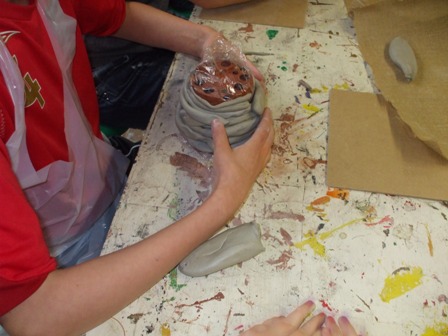 One child then asked me if she could paint her face. The clay faces were fantastic. Annabelle who has Aspergers asked if she could make a man and thus proceeded to create a detailed image which she made a coat, a scarf and a pair of trousers for the man all out of clay. She even made a small cat to keep him company. Annabelle then continued the rest of the afternoon painting the man. Later she made a bull’s head out of clay. Annabelle has a great eye for detail although she is very modest about her artwork. When she is under stress she will make noises and involuntary ticks. Interestingly, we saw no signs of these during the two days.
One child then asked me if she could paint her face. The clay faces were fantastic. Annabelle who has Aspergers asked if she could make a man and thus proceeded to create a detailed image which she made a coat, a scarf and a pair of trousers for the man all out of clay. She even made a small cat to keep him company. Annabelle then continued the rest of the afternoon painting the man. Later she made a bull’s head out of clay. Annabelle has a great eye for detail although she is very modest about her artwork. When she is under stress she will make noises and involuntary ticks. Interestingly, we saw no signs of these during the two days.
Art facilitates individuality and allows for freedom of expression and she was able to use the clay to create some outstanding pieces of work and need little teacher input.
Art is vital within every child’s learning experience of the world around them. The children used paint, clay, crayons and finger paints to express and create visual images of themselves. They explored texture, shape, colours, light and shade and structural form. I believe that children need the opportunity to explore what they know and understand about their environment through practising artistic skills such as painting.
Lee, who has Cormelia de Langue Syndrome, was a pleasure to work with as he started off sitting at the side of the room not wanting to join in – maybe because I was not familiar to him or the location was not familiar – and ended the two-day project producing some stunning visual art work.
Expressing ideas, opinions and feelings through art
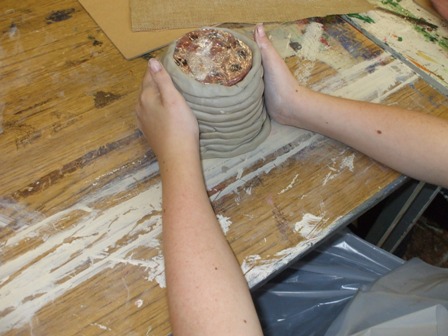
On the second day the children were introduced to different artists. The children chose an image they liked from the artist’s pack and were asked to recreate the image using paint. Some were supported and others worked alone. They were allowed the freedom to express their ideas, opinions and feelings through the medium of art. The children discussed the paintings, how to hold their brush and selected the correct paint to use. They were encouraged to discuss the images they designed, how they felt about their work and most importantly given the freedom and responsibility to explore the paint.
Barnes (2002) suggests many ways that children can be exposed to artwork. He says they learn so much from artist and designers but only if teachers develop high level thinking techniques.
The learning objectives
My main learning objective was to research how art allowed children with a learning difficulty the freedom to explore. I realise how free I was not to follow any formal curriculum or justify the place of art within this project. Our working objectives were:
- To use the work of an artist to stimulate thinking skills
- To produce art that is based on personal reflection
- To generate original artwork using a variety of media.
Not only were all these objectives met but the children skills went beyond these. The children experienced a sense of fun and got messy!
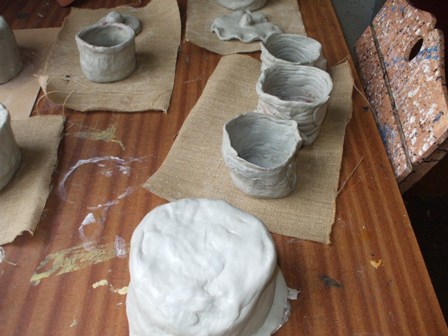 Art is vital within a child’s learning experience of the world around them and allowing them to using different art resources in this experience was rewarding and enlightening. My work appears to have helped the children to develop knowledge, thinking skills and allowed them to express themselves. Art connects all children. The children seemed to look at paintings and instantly understand them in their own way. They did not get distracted in the technical process behind putting their images together. They were free to explore, touch and smell the paint and clay and socially engage in the processes available.
Art is vital within a child’s learning experience of the world around them and allowing them to using different art resources in this experience was rewarding and enlightening. My work appears to have helped the children to develop knowledge, thinking skills and allowed them to express themselves. Art connects all children. The children seemed to look at paintings and instantly understand them in their own way. They did not get distracted in the technical process behind putting their images together. They were free to explore, touch and smell the paint and clay and socially engage in the processes available.
Further reading
Barnes, R. (2002) Teaching Art to Young Children. London. Routledge.
Eglinton, K. (2002) Art in the early years. London, Routledge.
Key, P and Stillman, J (2009) Teaching Primary Art and Design. Exeter. Learning Matters.
About the author
As a Senior lecturer in Education for ten years and module leader for Creative and Expressive Arts specialists on the University of Cumbria’s degree programme, Anita Chamberlain has experience of curriculum design and development, coordinating subject groups within the Arts and developing and modifying modules and course booklets during this time.
Anita has acted as a personal tutor to both undergraduate, post graduate and MA students supporting their learning experience and researched, wrote and delivered a Personal and Professional Development module entitled Teaching and Learning which included personalised learning and Philosophy. She has worked with external examiners and has been involved in validation of MA modules and independent HE Access Diploma courses.
She is currently undertaking school based research into Mindfulness and Philosophy alongside her role as primary teacher at The British International School in Stavanger, Norway where she is the Arts teacher/coordinator for the PYP and MYP and teaches the IB curriculum to pupils aged 7 to 16 years.
Banner photo by thom masat on Unsplash

